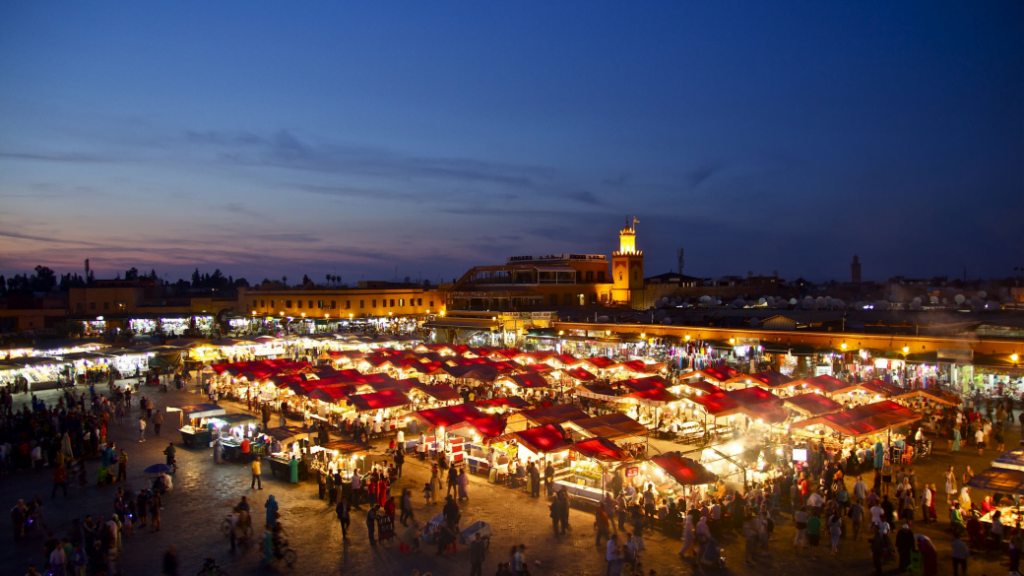Commerce in Global Marketplace embodies the multifaceted system of trade, exchange, and economic activity that facilitates the movement of goods, services, and capital across markets and borders. It encompasses a wide array of activities, ranging from buying and selling to financial transactions, distribution, and marketing. In this comprehensive exploration, we will delve into the intricacies of commerce. Its historical evolution, key components, modern dynamics, and significance in shaping economies and societies worldwide.

1. Introduction to Commerce
1.1 Definition
Commerce can be defined as the exchange of goods, services, and capital between buyers and sellers, typically involving transactions conducted in the marketplace. It encompasses a broad spectrum of activities, including buying, selling, bartering, importing, exporting, financing, and distributing goods and services to satisfy human wants and needs.

1.2 Historical Evolution
The roots of commerce can be traced back to ancient civilizations, where rudimentary forms of trade and exchange emerged to facilitate economic activity and resource allocation. From the barter systems of early societies to the development of currency, markets, and trading networks. Commerce has evolved over millennia, driven by advancements in technology, transportation, and globalization.
2. Key Components of Commerce

2.1 Trade

Trade is a fundamental component of commerce, involving the exchange of goods and services between buyers and sellers. Commerce in Global Marketplace or trade encompasses imports and exports of goods and services across national borders, while domestic trade involves transactions within a country’s territory. Trade can occur through various channels, including physical marketplace, online platforms, and intermediaries such as wholesalers, retailers, and distributors.
2.2 Finance

Finance plays a crucial role in commerce by facilitating transactions, investment, and capital allocation. Financial services enable businesses and individuals to manage risks, access credit, and invest in productive activities. It includes banking, lending, investment, and insurance. Financial institutions serve as intermediaries in the flow of funds between savers and borrowers. It includes banks, credit unions, stock exchanges, and insurance companies,
2.3 Marketing

Marketing encompasses the activities involved in promoting products, services, and brands to attract customers, generate demand, and drive sales. It promotion efforts aimed at reaching target audiences and influencing consumer behavior. Marketing includes market research, advertising, branding, pricing, distribution, and sales. Effective marketing strategies are essential for businesses to create value, differentiate themselves from competitors, and build strong customer relationships.
2.4 Logistics

Logistics involves the management of the flow of goods, services, and information from the point of origin to the point of consumption. It encompasses activities such as transportation, warehousing, inventory management, order fulfillment, and supply chain management. Efficient logistics operations are critical for minimizing costs, reducing lead times, and ensuring timely delivery of goods to customers.
2.5 E-commerce

E-commerce, refers to the buying and selling of goods and services over the internet or other electronic channels. It includes online retailing, digital marketplaces, electronic payments, and mobile commerce platforms that enable businesses and consumers to conduct transactions remotely. E-commerce has revolutionized the way commerce is conducted, offering convenience, accessibility, and global reach to businesses and consumers alike.
3. Modern Dynamics of Commerce in Global Marketplace

3.1 Globalization

Globalization has transformed the landscape of commerce by facilitating the integration of markets, economies, and societies on a global scale. Advances in transportation, communication, and technology have accelerated the flow of goods, services, and capital across borders. Also leading to increased trade, investment, and cultural exchange. Globalization has created new opportunities for businesses to expand into international markets. Also access diverse sources of supply and demand, and capitalize on economies of scale.
3.2 Digital Transformation

The digital transformation of commerce has revolutionized the way businesses operate, interact with customers, and conduct transactions. Technologies such as the internet, mobile devices, social media, and e-commerce platforms have reshaped consumer behavior, disrupted traditional business models, and created new opportunities for innovation and growth. Digital commerce enables businesses to reach global audiences, personalize customer experiences, and streamline operations through automation and data-driven insights.
3.3 Supply Chain Management

Supply chain management has become increasingly complex and critical in the modern commerce landscape, driven by global sourcing, lean manufacturing, and customer-centric demand. Effective supply chain management involves optimizing the flow of goods, information, and finances across interconnected networks of suppliers, manufacturers, distributors, and retailers. Strategies such as just-in-time inventory management, demand forecasting, and supply chain visibility are essential for enhancing efficiency, resilience, and competitiveness in the supply chain.
3.4 Sustainability and Corporate Social Responsibility

Sustainability and corporate social responsibility (CSR) have emerged as important considerations in modern commerce, reflecting growing awareness of environmental, social, and ethical issues. Businesses are increasingly expected to adopt sustainable practices, minimize environmental impact, and contribute to the well-being of communities. Sustainability initiatives such as eco-friendly production methods, ethical sourcing, and social impact programs are integral to corporate citizenship and long-term value creation.
4. Significance of Commerce in Global Marketplace

4.1 Economic Growth and Development

Commerce plays a central role in driving economic growth, fostering innovation, and promoting prosperity. By facilitating the exchange of goods, services, and capital, commerce stimulates investment, creates employment opportunities, and generates wealth. Vibrant commercial activity stimulates entrepreneurship, fosters competition, and spurs productivity gains, leading to higher standards of living and improved quality of life for individuals and communities.
4.2 Global Trade and Integration

Global trade and integration are essential drivers of commerce, connecting economies, cultures, and markets around the world. International trade promotes specialization, comparative advantage, and economic interdependence, enabling countries to leverage their strengths and access resources, technologies, and markets beyond their borders. Trade liberalization and international cooperation facilitate economic integration, reduce trade barriers, and promote peace and stability through mutually beneficial exchange.
4.3 Innovation and Technological Advancement

Commerce fuels innovation and technological advancement by creating incentives for research, development, and commercialization of new products and services. Market competition drives firms to innovate, improve efficiency, and meet evolving consumer demands, leading to continuous technological progress and product innovation. Technological advancements in areas such as digital commerce, logistics, and supply chain management have transformed business models, disrupted industries, and unlocked new opportunities for growth and efficiency.
4.4 Social and Cultural Exchange

Commerce fosters social and cultural exchange by facilitating interactions, communication, and collaboration among people from different backgrounds and regions. Trade networks, supply chains, and global markets serve as conduits for the exchange of ideas, values, and cultural practices, enriching diversity and promoting cross-cultural understanding. Commerce contributes to cultural diffusion, artistic expression, and the spread of knowledge, enhancing global connectivity and cooperation.
5. Conclusion
In conclusion, commerce is a dynamic and multifaceted system that drives economic activity, fosters innovation, and shapes societies worldwide. From the exchange of goods and services to financial transactions, marketing, logistics, and digital commerce. Commerce encompasses a broad spectrum of activities that facilitate trade, create value, and promote prosperity. Understanding the core concepts, dynamics, and significance of commerce is essential for businesses, policymakers, and individuals. Also seeking to navigate the complexities of the global economy and harness the opportunities of the digital age. As commerce continues to evolve and adapt to changing market dynamics and technological advancements, its transformative impact on economies, societies, and individuals will remain profound and enduring.









